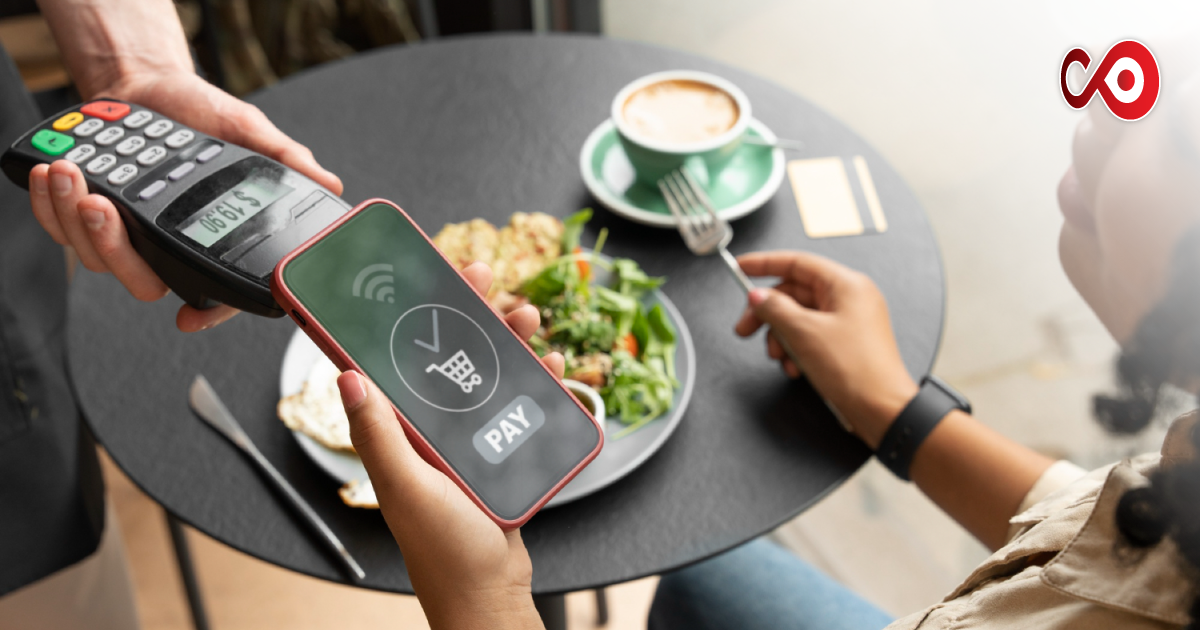With the advent and growing popularity of cloud kitchens, online restaurant booking systems, ePoS systems, and other online payment systems, online payment has become a timely demand in restaurant businesses. It facilitates daily transactions and greatly contributes to a seamless customer experience.
However, your restaurant business may fail if you are unaware of the best online payment integration practices. Are you planning to integrate an online payment system, or already have one?
Let’s put your worries aside as we share the crucial aspects and eight tips for best practices in integrating restaurant online payments.
Right Payment Gateway in Restaurants: 5 Crucial Things to Consider
Before jumping into the best practices for an online payment integration in a restaurant, a few things must be considered for the right gateway, such as:
- Charges & Fees:
If you know about payment gateways, they charge fees per transaction. These fees might be fixed, a percentage, or a combination of both.
So, confirm the payment gateway’s terms & conditions before putting it into work. Also, look out for any hidden charges or chargebacks.
- Compatibility of Integration:
The payment gateway must be compatible with your website, app, or bank account. You must make sure that the gateway integration doesn’t require complex coding or maintenance.
Moreover, check if the gateway allows local currency or multiple currencies for global consumers.
- Compliance & Security:
Compliance and security are crucial factors for a flawless and safe payment integration. Your customers’ transactions and financial data must be immune to certain hacking or cyber threats.
Compliant payment gateways ensure:
- End-to-end encryption
- Fraudulence aversion
- Tokenisation
The above should be considered before agreeing to take a payment gateway service for your restaurant.
- Functions & Features:
Opting for a payment gateway must be associated with user-friendly functions and features. A payment gateway must consist of multiple payment tools to make the customers’ transactions seamless.
Check if the gateway company offers invoicing, recurring transactions, etc., for oft-repeating customers. Moreover, you may even get a restaurant table booking system with your payment gateway through a third-party integration.
- User Experience:
A payment gateway is useless unless it promises to be user-friendly. The gateway you choose must be swift and smooth for a seamless user experience.
Some crucial aspects related to this are optimum page loading speed, proper responsiveness, ease of use, and other elements on both desktop and mobile. Besides, it must help with best practices during disputes, chargebacks, or refunds on customers’ ends.
Best Practices for Online Payment Integration: 8 Proven Tips
With the important factors covered, let’s jump onto the eight proven tips for the best practices for online payment integration:
-
Optimum Payment Options
You’ve repeatedly wanted to have this multiple payment option facility as a customer. It’s what makes the transactions smoother and shopping more fun.
As a restaurant owner, you must practise keeping up with the needs of customers in order to grow your business. Get payment options like credit cards, debit cards, digital wallets, etc. You may also keep an option for bank transfer.
Take ChefOnline, which offers customers a range of card payment options like Visa Card, Master Card, American Express, and so on.
-
Recurring Payments
Recurring payment options are now standard for many businesses, including restaurants. They are both customer—and business-friendly. Recurring payment options save customers precious time without the need for repetitive log-ins and manual payments each month or year.
If your restaurant offers gift plans, meal plans, loyalty programs, subscriptions, etc., you better incorporate the recurring payment option into your payment gateway.
-
Express Checkout
Faster online table booking software in restaurants today is focused on time-saving transactions, seamless communications, and ongoing revenues. Express checkout is a similar option that can be adapted as a best practice for online payment integration.
Let’s consider the ‘one-click checkout’ option, which allows customers to return to your restaurant without inserting payment and personal details all over again. For example, Shopify offers returning customers a one-tap option for faster checkouts and payments.
-
Smartphone Optimisation
Smartphones can either boost or diminish customers’ confidence in your restaurant’s brand, depending on their payment experience. Repetitive drop-offs, low connectivity, low page responsiveness, and other payment disruptions are common causes.
As a best practice, integrate a mobile wallet payment option for your customers. Hence, they can pay for their dine-in, takeaway, etc., through smartphones without standing on cues.
-
Options for Local Currency
London is a central hub for tourists and global customers. If you want to keep them coming back to your restaurant, your payment gateway should offer a local currency option on the card.
With a currency conversion option, foreign customers will not be inconvenienced or confused when making payments after enjoying delicious meals at your eatery.
-
Top-notch Security in Transactions
Ensuring high security in transactions is one of the crucial best practice principles for your restaurant. An all-around secure transaction system helps avoid fraudulence while instilling faith in customers’ minds about your brand.
To ensure a highly secure transaction system, your payment gateway must consist of:
- PCI DSS (Payment Card Industry Data Security Standard) compliance
- SSL Encryption
- 2-Factor Authentication
- Tokenisation
In addition to the above, you must keep updating the security protocols of your payment gateway to combat new cyber threats.
-
Accessibility to Transaction History
We all love transparency regarding spending, whether on bills or good things in life. So, your restaurant should also allow your loyal customers to access their transaction history. This will build trust and give them peace of mind.
To ensure this, create customer-friendly dashboards on your payment gateway for both the website and app. Allowing your customers to download their payment history, manage their loyalty or subscription programs, and more can develop a long-term bond.
-
Post-Payment Customer Support
Did you consider having post-payment customer support in your payment gateway? As a restaurant owner, it might be crucial to have one. For instance, your restaurant’s online booking system may require responding to customer complaints or confusion arising during the process.
While implementing post-payment customer support, make sure of the following:
- Resolving transaction queries
- Settling any disputes
- Authorised refunds
- Multiple support channels like email, phone, AI chatbot, etc.
- Informative and regularly updated FAQ on the restaurant’s website.
Key Takeaways
A seamless payment process keeps your restaurant business running. Any lasting disruption may hinder your efforts to run your business smoothly while satisfying your loyal customers.
Your best practice for an optimum online payment integration will be successful if you:
- Consider the five factors discussed above before investing in any payment gateway system on the market.
- Follow and implement the eight practical tips elaborated.
With proper implementation, your restaurant’s operational efficiency will increase, gradually leading to higher successes, including restaurant awards or as such.





